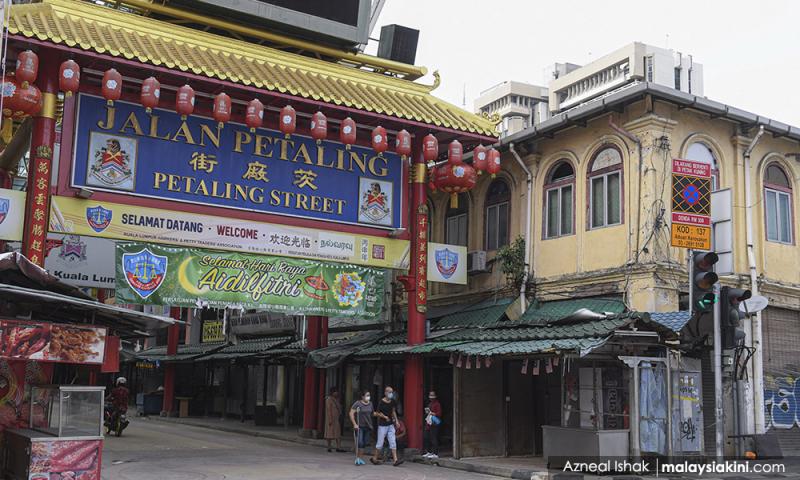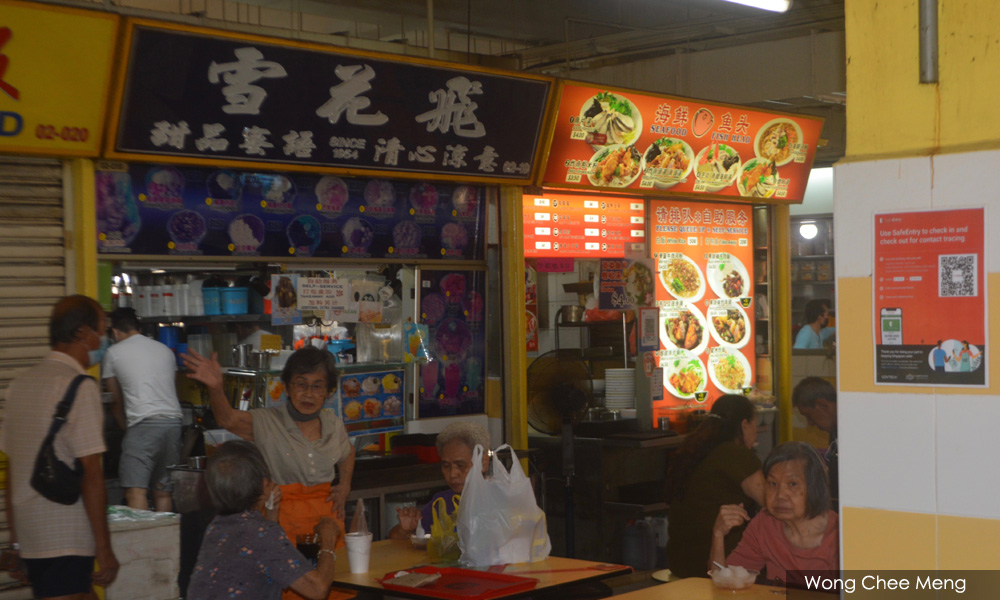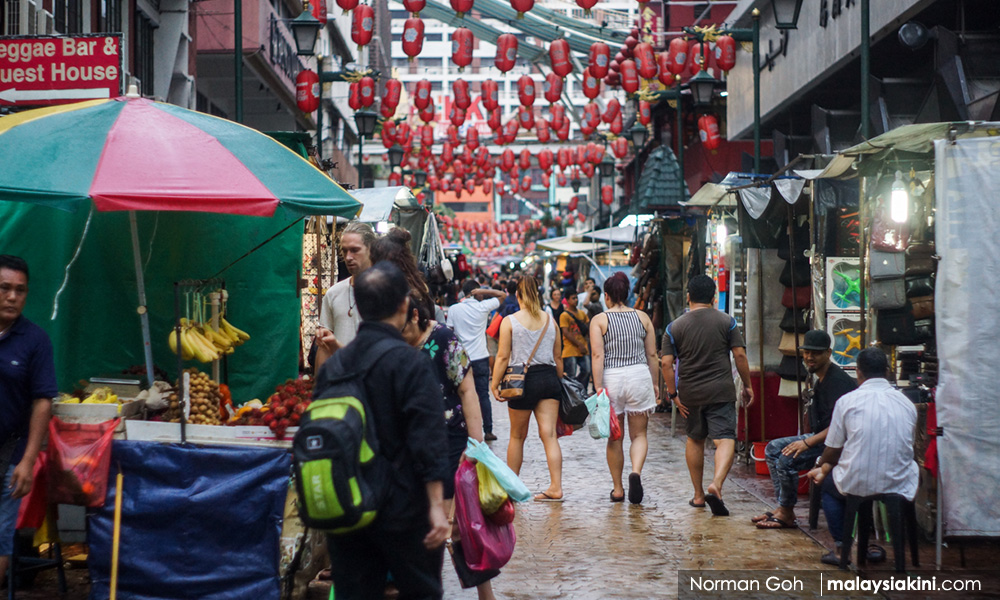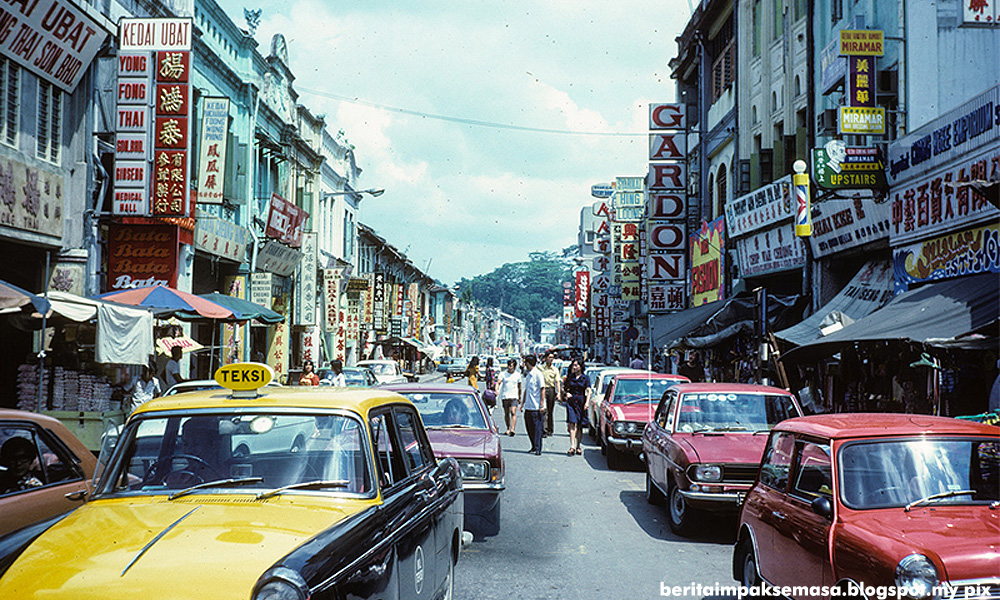
Andrew Sia
Published: Aug 9, 2024 3:10 PM
COMMENT | Roadside hawkers in Penang were scorned 40 years ago as “low-class” people “blocking traffic”. The old shops there were derided as “rundown and dirty”.
Today, the same hawkers are tourism superstars with long queues. Some have even received global Michelin food awards.
And those old shops? They have been refurbished as a Unesco World Heritage site. Property prices have soared.
The same scorning and scoffing is repeating itself with the back-street hawkers of Chinatown, Kuala Lumpur.
On Aug 3, the full force of the Madani government was unleashed upon them, with a 300-strong team led by Kuala Lumpur City Hall (DBKL) plus the police and excavators.
Videos online looked like a typhoon had swept through, leaving mangled masses of metal from broken stalls and awnings. Was this a helpful use of taxpayer-funded manpower?
Published: Aug 9, 2024 3:10 PM
COMMENT | Roadside hawkers in Penang were scorned 40 years ago as “low-class” people “blocking traffic”. The old shops there were derided as “rundown and dirty”.
Today, the same hawkers are tourism superstars with long queues. Some have even received global Michelin food awards.
And those old shops? They have been refurbished as a Unesco World Heritage site. Property prices have soared.
The same scorning and scoffing is repeating itself with the back-street hawkers of Chinatown, Kuala Lumpur.
On Aug 3, the full force of the Madani government was unleashed upon them, with a 300-strong team led by Kuala Lumpur City Hall (DBKL) plus the police and excavators.
Videos online looked like a typhoon had swept through, leaving mangled masses of metal from broken stalls and awnings. Was this a helpful use of taxpayer-funded manpower?

Yet, many tourists, including myself, find the back-lane hawkers in old Kuala Lumpur fascinating. These stalls offer “al fresco” meals on a budget.
This earthy charm is part of the diversity that makes this city attractive, not just more skyscrapers and shopping malls that look the same anywhere in the world.
It’s the same in Melbourne, where once neglected back lanes have been rejuvenated with little cafes and retail shops and are now must-see tourism attractions.
Or take Saigon, Vietnam. I've had food both in big tourist restaurants and back-lane stalls there and the humble eateries always tasted better.
Don't sterilise our streets
Let's not repeat the mistake of Singapore, which went on a crusade to “clean up” the streets of vendors in the 1980s only to belatedly realise… whoops, why does the Lion City seem so “sterile” and lacking in “street culture” compared to bustling Bangkok?
To rectify that, roadside vendors have been allowed to reappear in Singapore's Chinatown - in an “orderly” way of course.

Hawker stalls in Singapore
If the nooks and crannies behind Kuala Lumpur’s Petaling Street and Sultan Street are properly managed, it will add to the old city’s existing tourist attractions, such as the River of Life, Merdeka Square, Central Market, plus several mosques and temples.
Ah, but the back-lane stalls are “dirty and messy” some complain. Well, if a mamak restaurant is dirty, does DBKL demolish the whole shop? No, they impose fines or suspensions.
It’s about regulation, not destruction. Anyway, the hawkers have every incentive to keep the back lanes clean because this is their place to “cari makan” (make money).
Another complaint is that the hawkers “block traffic”. Maybe those along the front main road sidewalks do but honestly, if those were removed, we would have motorbikes climbing pavements and cars double parking. Malaysia Boleh ya?
As for the back lanes, nobody drives through there. Just ensure that back-lane stalls don’t block the rear exits of shops in case of emergencies. If they do, then fine them.
If the nooks and crannies behind Kuala Lumpur’s Petaling Street and Sultan Street are properly managed, it will add to the old city’s existing tourist attractions, such as the River of Life, Merdeka Square, Central Market, plus several mosques and temples.
Ah, but the back-lane stalls are “dirty and messy” some complain. Well, if a mamak restaurant is dirty, does DBKL demolish the whole shop? No, they impose fines or suspensions.
It’s about regulation, not destruction. Anyway, the hawkers have every incentive to keep the back lanes clean because this is their place to “cari makan” (make money).
Another complaint is that the hawkers “block traffic”. Maybe those along the front main road sidewalks do but honestly, if those were removed, we would have motorbikes climbing pavements and cars double parking. Malaysia Boleh ya?
As for the back lanes, nobody drives through there. Just ensure that back-lane stalls don’t block the rear exits of shops in case of emergencies. If they do, then fine them.

Elena Mei Yun runs “KL - the hidden secrets bike tour” and she says, “The stalls do have licences. They are not illegal. They do not block the back lanes. Motorbikes and bicycles move through freely.”
There are many delicious food and drink stalls here, including Foo Hwa kopitiam, Sai Kee stir fry (dai chow), and Tian Tong “Seven-Decades noodles”. Other famous stalls are Back Lane Wantan Mee and Ah Sai mixed rice.
One satisfied guest commented on TripAdvisor: “Elena took us on an amazing ride through many back streets that we wouldn’t have found on our own. We learnt a lot about the history of KL and even drank coffee with the locals. It was a terrific experience.”
Learn our history
It took years of campaigning by dedicated heritage activists to change the mindset of people and the government that the “dingy and dirty” old shops in Penang and Malacca were actually precious antiques that should be restored and celebrated.
Hawkers have been a fixture of downtown Kuala Lumpur ever since it became a tin mining town in the 19th century. But tensions arose with the government later.
As a boy back in the 1970s and 80s, I remember the wild stampedes of wheeled hawker stalls in Petaling Street whenever somebody shouted that DBKL had come.

Petaling Street circa 1970
Suddenly, all the traders would jump on the bicycles attached to their carts and start pedalling like crazy. In their haste to escape, some would even just throw away things.
You see, they were licensed as mobile hawkers but not allowed to hang around Petaling Street, as that would be yes, you guessed it, “blocking traffic” for the Almighty Automobile.
Yet, they were not corrupt politicians robbing the country blind, they were just working hard for an honest living. Why were they treated like criminals who had to run?
The racial overtones were also not very “harmonious”, as the enforcers were of one group while the traders were of another.
This sad situation was finally resolved in 2003 when DBKL agreed to let hawkers operate permanently on Petaling Street.
The government also spent RM11 million to transform the area into a pedestrian shopping arcade by installing Chinese arches and a green translucent roof to cover the street.
Suddenly, all the traders would jump on the bicycles attached to their carts and start pedalling like crazy. In their haste to escape, some would even just throw away things.
You see, they were licensed as mobile hawkers but not allowed to hang around Petaling Street, as that would be yes, you guessed it, “blocking traffic” for the Almighty Automobile.
Yet, they were not corrupt politicians robbing the country blind, they were just working hard for an honest living. Why were they treated like criminals who had to run?
The racial overtones were also not very “harmonious”, as the enforcers were of one group while the traders were of another.
This sad situation was finally resolved in 2003 when DBKL agreed to let hawkers operate permanently on Petaling Street.
The government also spent RM11 million to transform the area into a pedestrian shopping arcade by installing Chinese arches and a green translucent roof to cover the street.

Thanks to that common sense decision, Petaling Street is now a proper and popular tourist attraction - even if sticklers for legality may fuss and fume about the “not-so-original” watches or handbags sold there.
If the authorities can adopt a similar open-minded view about what tourism is, the back lanes of Chinatown can also be beautified, perhaps with street art.
If race is the issue, then bring in Malay nasi lemak and lontong, mamak sup kambing and Indian appam stalls to operate there along with the existing Chinese hawkers. Don’t forget that the office workers of the new Merdeka 118 Tower nearby will need access to cheap food regularly.
Hawkers watch crime
The best example of a back lane reborn is Kwai Chai Hong or Demon’s Alley at the tail end of Petaling Street. It got its name because drug dealers and prostitutes used to hang out there.
Refurbishment costing RM1.5 million in 2019 saw this former crime den rejuvenated with six wall murals depicting life in the 1960s.
This has helped transform the surrounding area of run-down shops into many Instagram-worthy eateries such as Merchant’s Lane (which was a former brothel). Property prices are rising too.

Another overlooked benefit of back-lane hawkers is that they bring life there. In contrast, dead back streets invite criminal activity.
In other words, the hawkers are doing an unofficial policing job and relieving our cops for more “important” duties, such as VIP motorcades.
The authorities also tore down the metal awnings that the hawkers had put up at their own expense. Yes, technically they may be illegal. But they provide better shelter from rain and sun than sitting under umbrellas or makeshift plastic sheets.
Maybe DBKL should instead build proper shelters in the back lanes, just as was done for the main Petaling Street market in 2003.
But “renovations” by DBKL made things worse for traders at Kepong Baru and Lucky Garden, Bangsar. So maybe it's better for DBKL not to hand out more construction contracts and just let the people help themselves?
Everyone knows that the real economy is not doing great. So please, if the Madani leaders can’t help, at least don’t destroy people’s rice bowls. Not everybody gets civil servants’ salaries, recently increased at taxpayers’ expense.
So let’s appreciate the potential tourism treasure of old Kuala Lumpur back lanes. Regulate and beautify the place if needed but don’t wreck the hawker stalls there.
In short, stop bullying humble hawkers.
ANDREW SIA is a veteran journalist who likes teh tarik khau kurang manis. You are welcome to give him ideas to brew at tehtarik@gmail.com

Get rid of these hawkers who have shamelessly contributed their illegal incomes to the vernacular schools.
ReplyDelete